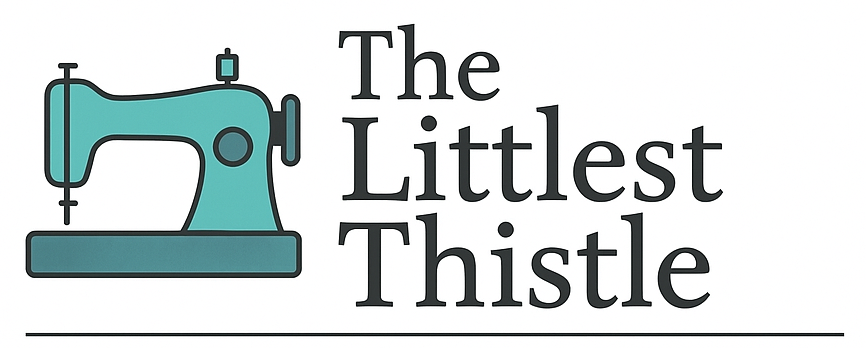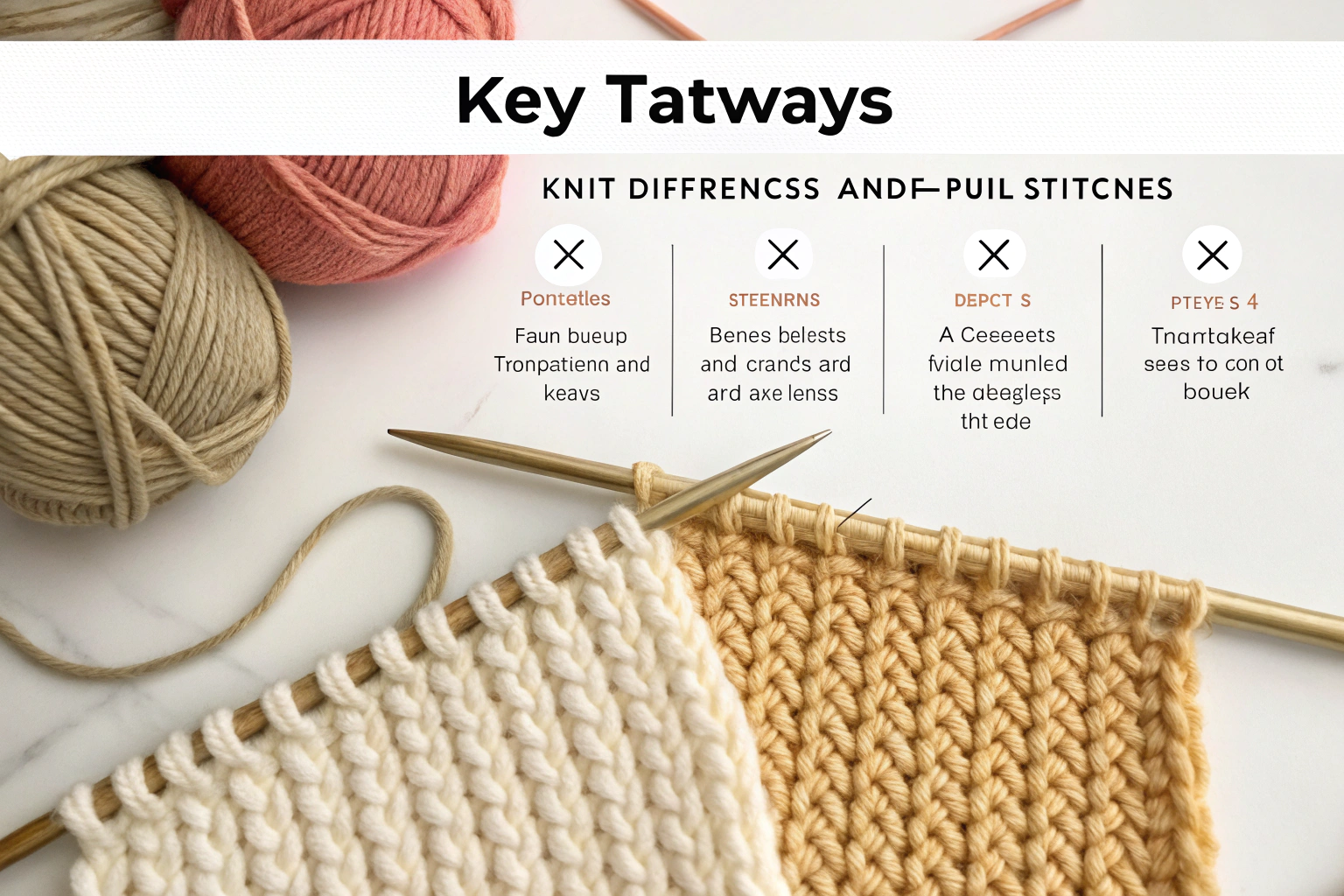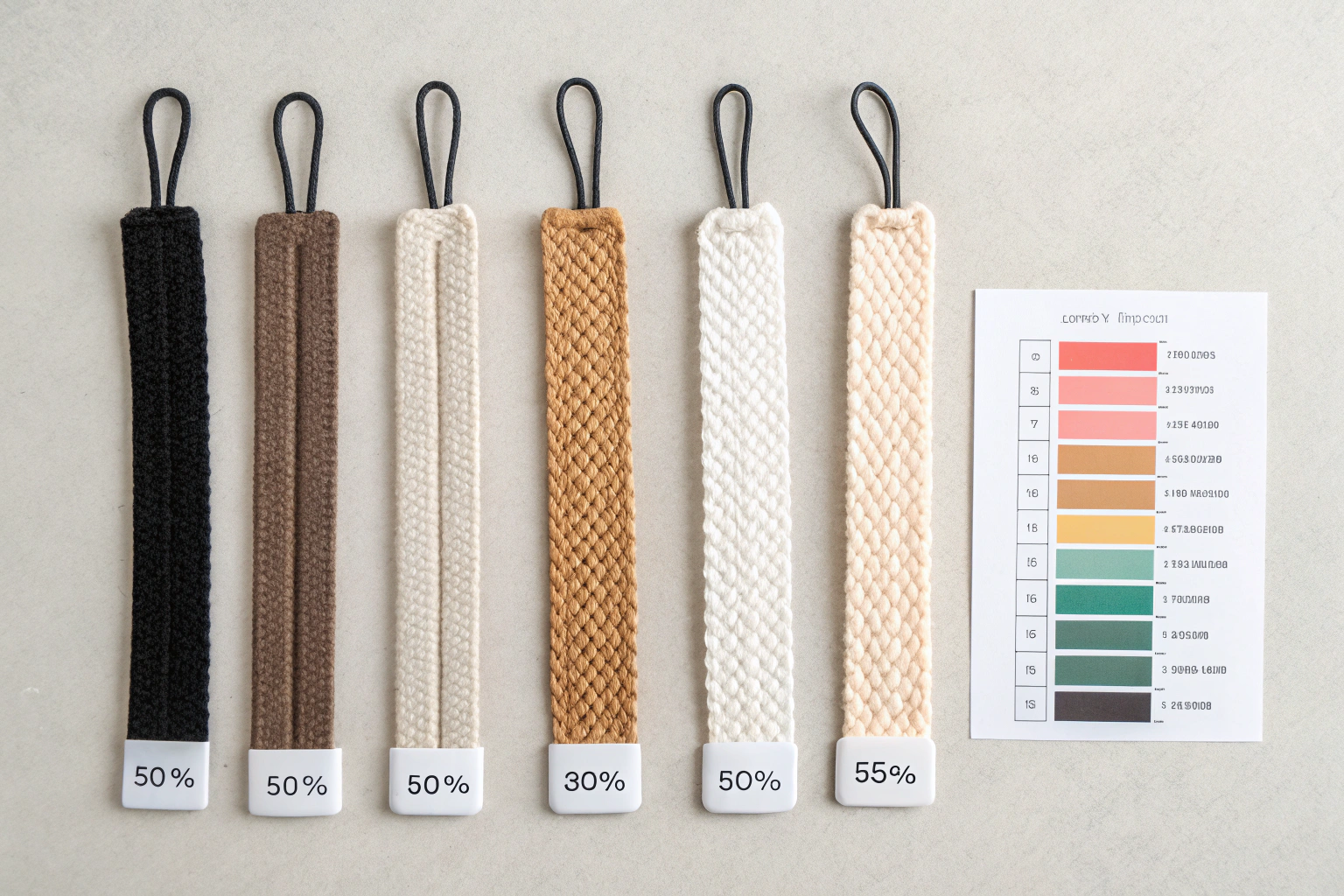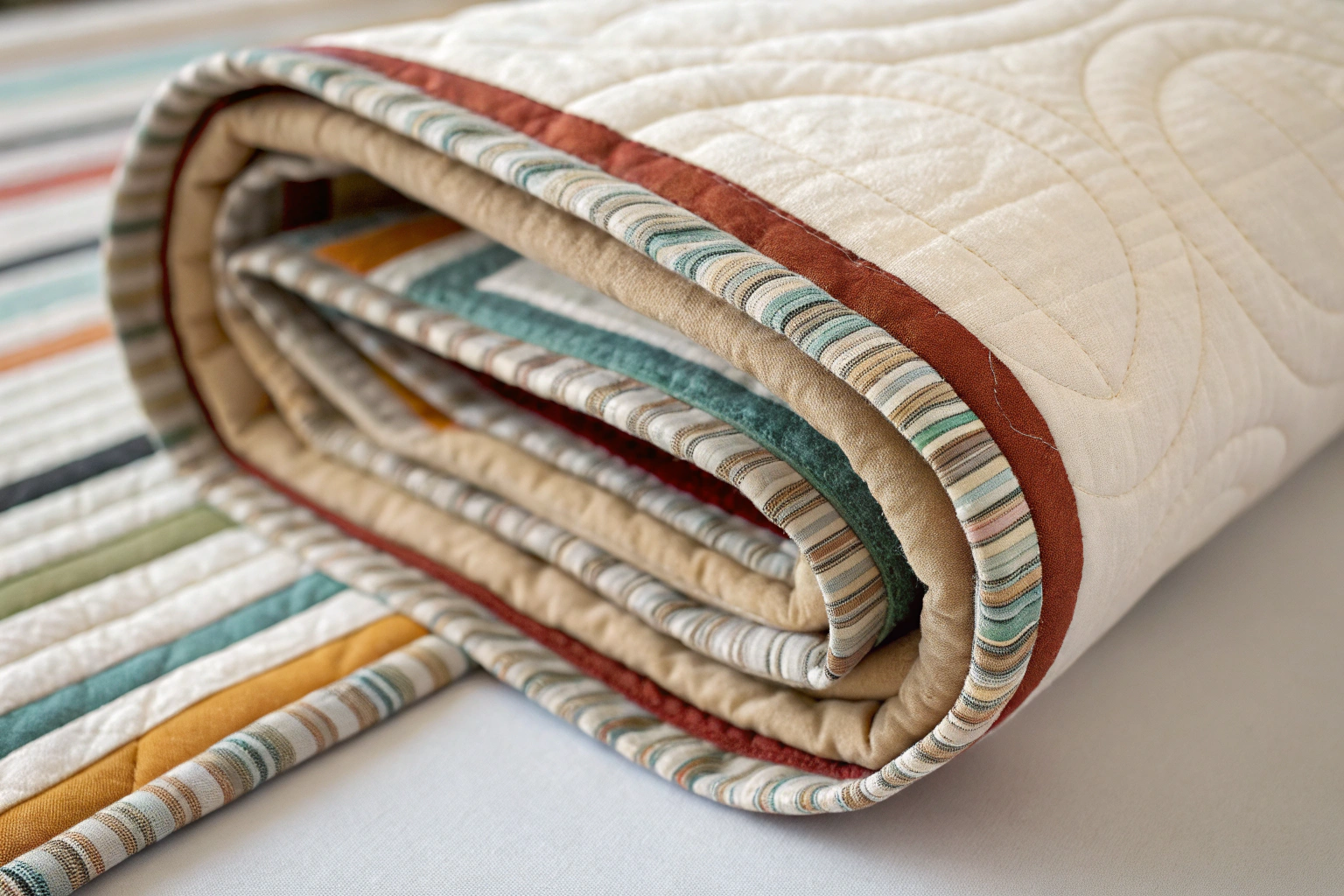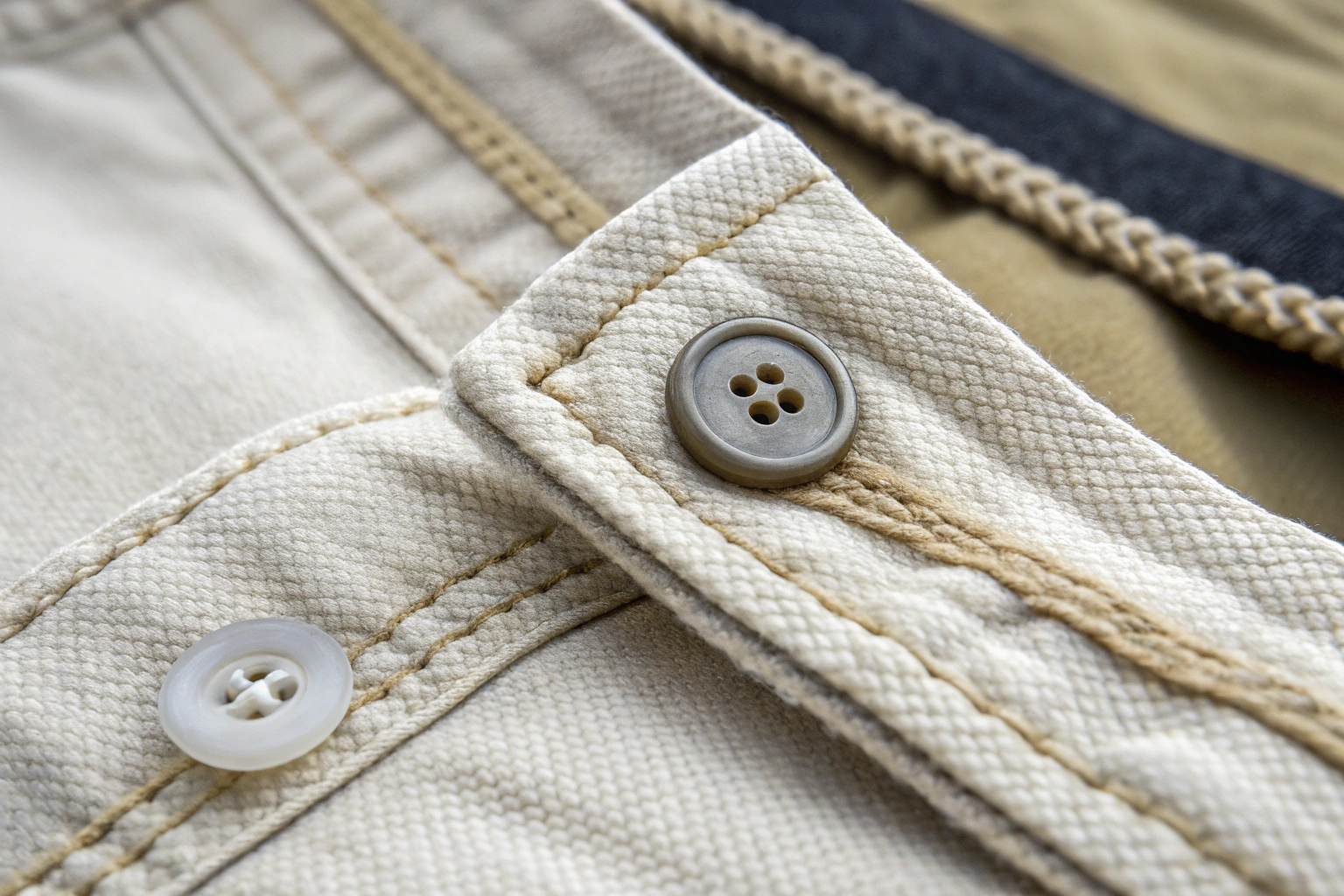The “knit vs purl” distinction refers to the two foundational stitches that form the basis of all knitting. A knit stitch and a purl stitch are mechanically the inverse of each other; in fact, a knit stitch seen from the back side looks exactly like a purl stitch, and vice versa. This relationship is what allows knitters to create an endless variety of textured fabrics simply by changing the sequence of these two stitches.
Key Benefits at a Glance
- Create Basic Fabrics: Understanding how knits and purls interact allows you to create foundational fabrics like smooth stockinette stitch and bumpy garter stitch.
- Unlock All Patterns: Combining these two stitches is the key to creating virtually any knitting pattern, from simple ribbing for cuffs to intricate cables and lace designs.
- Fix Mistakes Easily: Learning to visually identify knit “V” shapes and purl “bumps” makes it simple to spot errors in your work and fix them without having to unravel everything.
- Knit Seamless Garments: Mastering both stitches is essential for knitting in the round, a technique used to create seamless hats, socks, and sweaters.
- Control Fabric Behavior: Using different combinations lets you control the final fabric’s elasticity, drape, and texture, giving your projects a professional and intentional finish.
Purpose of this guide
This guide is for beginner knitters and anyone seeking to clarify the fundamental relationship between the knit and purl stitch. It solves the common confusion about why two different-looking stitches are considered opposites. You will learn how to identify each stitch in your work, understand how they combine to create different fabric textures, and avoid common mistakes like accidental purling in a knit row. This foundational knowledge is the key to reading your knitting, fixing errors confidently, and successfully moving on to more complex patterns.
When I first picked up knitting needles fifteen years ago, I was utterly baffled by the seemingly magical relationship between knit and purl stitches. My instructor kept saying they were “two sides of the same coin,” but all I could see were completely different hand movements that produced wildly different-looking results. It wasn’t until I held up my practice swatch and examined both sides that the lightbulb finally went off – what appeared as neat V-shaped stitches on one side magically transformed into horizontal bumps on the other. This fundamental revelation didn’t just help me understand my knitting; it completely transformed my approach to the craft and opened up endless creative possibilities.
“In 2025, research from Stitch & Story found that ‘the knit stitch and the purl stitch are the exact same stitch worked on opposite sides of the fabric…the front side of a knit stitch is the same as the back side of a purl stitch and vice versa.’”
— Stitch & Story, February 2025
Source link
Understanding the relationship between knit and purl stitches is absolutely crucial for any aspiring knitter because these two fundamental techniques form the foundation of virtually every knitting pattern you’ll encounter. Whether you’re creating a simple scarf in garter stitch or tackling an intricate cable sweater, you’re still working with variations and combinations of these same basic building blocks. Once you master the mechanics and visual recognition of both stitches, you’ll find that reading patterns becomes intuitive, fixing mistakes becomes manageable, and designing your own projects becomes an exciting creative adventure rather than an overwhelming challenge.
The Basic Structure of Knitted Fabric
Every piece of knitted fabric, regardless of its complexity, is built upon the same fundamental principle: interlocking loops of yarn that support and connect to one another in a continuous chain. When I teach beginners, I like to compare this structure to a ladder made of loops – each “rung” of the ladder is actually a loop of yarn that passes through the loop below it, creating a stable yet flexible fabric structure. This loop-through-loop construction is what gives knitted fabric its characteristic stretch and drape, allowing it to conform to curves and move with the wearer in ways that woven fabrics simply cannot match.
The beauty of this interlocking system lies in its simplicity and versatility. Each individual stitch is essentially just a controlled loop that holds its neighbors in place while maintaining enough flexibility to allow the fabric to stretch and recover. When you create a knit stitch, you’re pulling a new loop of yarn through an existing loop from back to front. When you create a purl stitch, you’re doing exactly the same thing, but approaching it from the opposite direction – pulling the new loop from front to back. This means that the actual structure of each stitch is identical; only your perspective and approach differ, which explains why the front of a knit stitch looks identical to the back of a purl stitch.
The Technical Execution: How to Create Knit and Purl Stitches
The mechanical differences between creating knit and purl stitches center entirely on yarn position and the direction from which you insert your working needle. For a knit stitch, the working yarn stays in back of your work throughout the entire process, and you insert your right needle through the front of the stitch from left to right. I teach my students to think of this motion as “entering through the front door” – you wrap the yarn counterclockwise around your right needle and pull it through to create a new loop, then slip the old stitch off the left needle.
Creating a purl stitch requires the opposite setup and motion. The working yarn must be positioned in front of your work, and you insert your right needle through the front of the stitch from right to left – essentially “entering through the back door.” The yarn wrapping motion is also reversed, moving clockwise around the needle before you pull the new loop through and drop the old stitch. Many beginners struggle with purl stitches initially because this yarn positioning feels awkward, but I always reassure them that it’s simply the mirror image of the knit stitch they’ve already learned.
The key to mastering both stitches lies in maintaining consistent yarn tension and developing muscle memory for these fundamental movements. I’ve found that students who practice switching back and forth between knit and purl stitches in the same row often develop better overall technique because they’re forced to pay attention to yarn positioning and needle insertion angle. When you can smoothly transition between these two motions without thinking about them, you’ve truly mastered the building blocks of knitting and can tackle any pattern with confidence.
Visual Differences: How Knit and Purl Stitches Appear in Fabric
“In 2024, more than 62% of new knitters reported that learning the differences between knit and purl stitches was critical for identifying patterns, with knit stitches appearing as ‘V’-shaped loops and purl stitches as horizontal bumps.”
— The Sleepy Stitch, August 2024
Source link
The visual characteristics of knit and purl stitches are distinctly different when viewed from the front side of your work, making them relatively easy to identify once you know what to look for. Knit stitches appear as neat, uniform V-shaped formations that stack vertically in columns, creating a smooth, flat surface that’s often described as looking like tiny interlocking chains. These V-shapes are actually the bottom portions of the stitch loops, and when worked consistently, they create the classic “right side” appearance of stockinette stitch that you see on most commercial knitwear.
Purl stitches, when viewed from the front, appear as horizontal bumps or ridges that run across the fabric rather than vertically. These bumps are created by the top portions of the stitch loops, which sit prominently on the surface of the fabric rather than receding into the background like knit stitches do. I remember helping a student who was confused about why her knitting looked different on each side, and the moment she understood that those V-shapes on one side were creating the bumps on the other side was a true “aha” moment that completely changed her relationship with her knitting. Understanding this visual relationship is crucial for reading your work and following patterns accurately.
How to Identify Knit vs Purl Stitches in Your Work
Learning to “read” your knitting by quickly identifying knit and purl stitches is one of the most valuable skills you can develop as a knitter. I’ve developed a systematic approach over my years of teaching that involves scanning the surface of the work for the characteristic visual markers of each stitch type. When looking at your knitting from the working side, knit stitches will show their smooth V-shaped fronts, while purl stitches will display their bumpy, horizontal ridges. This visual scanning becomes automatic with practice, allowing you to quickly verify that you’re following your pattern correctly and catch mistakes before they become major problems.
The ability to identify stitches at a glance has saved me countless hours throughout my knitting career, both in my own projects and when helping students troubleshoot their work. When you can quickly spot whether a stitch should be knit or purled based on the established pattern in your fabric, you no longer have to rely solely on written instructions or row counters. This skill becomes particularly valuable when working complex stitch patterns, recovering from mistakes, or adapting patterns to suit your preferences. I always tell my students that developing strong stitch recognition skills is like learning to read a new language – initially challenging but incredibly rewarding once mastered.
How Stitches Sit on the Knitting Needle
Understanding proper stitch orientation on your knitting needle is fundamental to maintaining consistent tension and avoiding twisted stitches. When stitches are correctly mounted on your needle, they should sit with their “leading leg” (the strand of yarn closest to the tip of the needle) positioned on the front of the needle, while the “trailing leg” sits behind. I teach my students to think of stitches as little horses sitting on a fence – they should all be facing the same direction with their front legs hanging down in front and their back legs behind.
When stitches become twisted or improperly oriented, it’s usually because the yarn was wrapped in the wrong direction when the stitch was created, or because the stitch was picked up incorrectly after being dropped. Twisted stitches create a different fabric texture and can throw off your gauge, so learning to recognize and correct them is essential. In my workshops, I use the analogy of the stitch “legs” to help students quickly assess whether their stitches are properly seated, and this visual reference has proven incredibly helpful for building confidence in stitch recognition.
Practical Exercises to Improve Your Stitch Recognition
The best way to develop reliable stitch identification skills is through focused practice with simple exercises that gradually build your confidence and speed. I always start my students with what I call the “stitch census” exercise – knitting a small swatch in stockinette stitch (alternating rows of knit and purl stitches), then spending time examining both sides and identifying individual stitches until the differences become crystal clear. This foundation exercise helps build the visual vocabulary needed for more complex pattern recognition.
Once students are comfortable identifying stitches in stockinette, I have them practice with simple ribbing patterns that require switching between knit and purl stitches within the same row. This exercise forces them to constantly assess which type of stitch they’re looking at and decide what comes next based on the pattern they’re creating. I’ve seen students make tremendous breakthroughs during these practice sessions, often experiencing that magical moment when the logic of the pattern suddenly becomes clear and they can “read” their knitting without constantly referring to written instructions.
The final exercise I recommend involves working with deliberately created “mistake” swatches where I’ve intentionally placed wrong stitches in established patterns. Students practice scanning the fabric to identify where the mistakes occur and what type of correction is needed. This exercise builds both recognition skills and confidence in problem-solving, preparing knitters to handle mistakes gracefully in their own projects. The students who master these exercises consistently report feeling much more confident and independent in their knitting journey.
Common Pitfalls When Reading Knit vs Purl Stitches
The most frequent mistake I encounter when teaching stitch identification involves students confusing twisted stitches with regular stitches, or misreading the pattern because they’re looking at the wrong side of their work. Twisted stitches can appear deceptively similar to regular stitches at first glance, but they create a tighter, more closed appearance that can throw off both stitch counts and pattern recognition. I’ve developed specific techniques for helping students distinguish between these different stitch orientations, including having them feel the fabric texture and examine the way light reflects off the stitches.
Another common pitfall occurs when knitters try to read their work while it’s stretched on the needles or when lighting conditions make it difficult to see the subtle differences between stitch types. I always encourage students to periodically remove their work from the needles (using a lifeline if necessary) and examine it in good light with the fabric relaxed to its natural dimensions. This practice has helped numerous students catch and correct mistakes that would have been much more difficult to fix if left unaddressed, and it builds the kind of careful observation habits that serve knitters well throughout their crafting journey.
Common Combinations of Knit and Purl Stitches
The magic of knitting lies in how these two fundamental stitches can be combined in countless ways to create textures, patterns, and visual effects that seem far more complex than their simple origins would suggest. Throughout my design career, I’ve been continually amazed by how arranging knits and purls in different sequences can produce everything from subtle textural interest to bold geometric patterns, from fabric that mimics woven textures to three-dimensional sculptural effects. Understanding these combinations has fundamentally shaped my approach to creating original patterns and has opened up endless possibilities for creative expression.
What initially appears to be a limitation – having only two basic stitches to work with – actually becomes a source of incredible versatility once you understand the principles behind combining them. Each different arrangement of knits and purls creates its own distinct character: some combinations produce fabrics that lie flat and smooth, others create pronounced ridges or valleys, and still others generate complex interlocking patterns that seem to dance across the surface of the fabric. The key insight I share with my students is that mastering these fundamental combinations provides the foundation for understanding virtually any knitting pattern they’ll encounter, regardless of how complex it might initially appear.
Stockinette, Garter, and Ribbing: The Basic Building Blocks
Stockinette stitch, created by alternating rows of knit and purl stitches, represents the most fundamental and recognizable knitted fabric structure. When working flat, you knit all stitches on the right-side rows and purl all stitches on the wrong-side rows, creating that classic smooth V-shaped texture on one side and the bumpy purl texture on the reverse. I always tell my students that stockinette is like the “vanilla ice cream” of knitting – it forms the foundation for countless other patterns and techniques, and understanding its characteristics is essential for more advanced work.
Garter stitch, which involves knitting every row when working flat (or alternating knit and purl rounds when working in the round), creates a completely different fabric with unique properties. The resulting texture shows horizontal ridges on both sides of the fabric, and unlike stockinette, garter stitch lies flat without curling and has significant stretch in the vertical direction. This makes it excellent for borders, scarves, and any application where you want a fabric that maintains its shape without additional finishing.
Ribbing patterns, which alternate knit and purl stitches within the same row, create vertical columns of texture that provide exceptional elasticity and recovery. The most common variations include 1×1 ribbing (alternating single knit and purl stitches) and 2×2 ribbing (alternating pairs of knit and purl stitches), but the possibilities are endless. I’ve found that teaching students to master these three fundamental patterns gives them the confidence and skills needed to tackle virtually any knitting project, as most complex patterns are simply variations or combinations of these basic building blocks.
| Pattern Type | Construction | Appearance | Properties | Common Uses |
|---|---|---|---|---|
| Stockinette | Alternating knit and purl rows | Smooth V-shapes on front, bumps on back | Curls at edges, minimal stretch | Sweater bodies, fitted garments |
| Garter | Knit every row | Horizontal ridges on both sides | Lies flat, vertical stretch | Scarves, borders, baby blankets |
| 1×1 Ribbing | Alternating single knit and purl stitches | Vertical columns | Exceptional elasticity | Cuffs, hems, fitted edges |
| 2×2 Ribbing | Alternating pairs of knit and purl stitches | Wider vertical columns | Good stretch, more relaxed fit | Sweater hems, hat brims |
How to Switch Between Knit and Purl Stitches Mid-Row
Smoothly transitioning between knit and purl stitches within the same row is a crucial skill that initially challenges many knitters but becomes second nature with practice. The key lies in managing your yarn position efficiently – when moving from a knit stitch to a purl stitch, you must bring the yarn forward between the needle tips, and when moving from purl to knit, the yarn must go back between the needles. I’ve developed a technique I call “yarn parking” where I consistently position the yarn in the correct location before attempting each stitch, which prevents the loose loops and tension issues that often plague beginners.
The most common mistake I see when students are learning to switch between stitches mid-row involves accidentally wrapping the yarn over the needle when changing positions, which creates unwanted yarn-overs and increases the stitch count. Through years of teaching, I’ve refined my approach to emphasizing deliberate yarn movement and encouraging students to pause and check their yarn position before beginning each stitch. This careful attention to detail during the learning phase pays dividends later when working complex patterns that require frequent transitions between knit and purl stitches, such as ribbing, seed stitch, or intricate textural patterns.
Beyond Basics: Creating Texture with Knit and Purl Variations
Once you’ve mastered the fundamental combinations of knit and purl stitches, a whole world of textural possibilities opens up through more complex arrangements and variations. Patterns like seed stitch, moss stitch, and basketweave create fascinating three-dimensional effects by strategically placing knits and purls to interrupt the natural flow of the stitches. In my own design work, I’ve experimented with creating original textural patterns by mapping out different arrangements on graph paper and then knitting test swatches to see how the fabric behaves.
Some of my favorite textural effects come from patterns that play with scale and rhythm – for instance, creating large diamonds or squares by grouping stitches in specific arrangements, or developing wavy, organic textures by gradually shifting the placement of knit and purl stitches across multiple rows. The beauty of working with these fundamental building blocks is that once you understand the underlying principles, you can modify existing patterns or create entirely new ones to suit your specific vision or project requirements. This level of creative control and customization is what transforms knitting from simply following instructions to truly artistic expression.
- Seed Stitch: Alternating single knits and purls, offset by one stitch each row for a bumpy, even texture
- Moss Stitch: Similar to seed stitch but worked in pairs, creating a more pronounced textural effect
- Basketweave: Blocks of stockinette and reverse stockinette arranged in a checkerboard pattern
- Diamond Patterns: Knit and purl stitches arranged to create geometric diamond shapes
- Waffle Stitch: Creates deep vertical and horizontal lines resembling a waffle texture
- Trinity Stitch: Combines knit and purl with increases and decreases for a bobbled texture
Troubleshooting Common Issues with Knit and Purl Stitches
Even experienced knitters encounter challenges with basic knit and purl stitches from time to time, and learning to diagnose and resolve these issues is an essential part of developing true mastery of the craft. Throughout my teaching career, I’ve observed that most problems stem from inconsistent tension, improper stitch orientation, or confusion about yarn positioning, but the good news is that all of these issues are completely correctable with the right approach and a bit of practice. I’ve developed systematic methods for identifying the root causes of common problems and implementing solutions that not only fix the immediate issue but also prevent it from recurring in future projects.
The key to successful troubleshooting lies in learning to examine your knitting with a critical but patient eye, understanding that mistakes are a natural part of the learning process rather than signs of failure. When I work with students who are struggling with tension issues or twisted stitches, I always emphasize that recognizing the problem is actually the first sign of progress – it means their eye is developing the ability to distinguish between correct and incorrect technique. This diagnostic skill becomes invaluable as knitters progress to more complex projects where small inconsistencies can compound into larger issues if left unaddressed.
Working with Twisted Stitches
Twisted stitches occur when the yarn is wrapped in the wrong direction during stitch formation or when stitches are picked up incorrectly, resulting in a tighter, more closed appearance that can affect both the texture and gauge of your knitting. In my early knitting days, I struggled with consistent twisted stitches without realizing what was causing them, and it wasn’t until a more experienced knitter pointed out the difference that I understood how my wrapping technique was creating the problem. I now teach students to examine their stitches on the needle carefully, looking for that characteristic closed, tight appearance that indicates a twist.
While twisted stitches are generally considered mistakes in Western knitting traditions, they’re actually utilized intentionally in some Eastern European knitting styles to create specific textural effects. This means that learning to create and control twisted stitches can actually expand your technical repertoire rather than simply being something to avoid. I’ve incorporated deliberate twisted stitch techniques into some of my original designs, using them to create interesting textural contrasts or to achieve specific shaping effects that wouldn’t be possible with regular stitches alone.
Fixing Mistakes in Your Knitting
Learning to identify and correct errors in your knitting is just as important as learning to create perfect stitches in the first place, and I always tell my students that becoming proficient at fixing mistakes will actually make them more confident and adventurous knitters. The most common mistake involving knit and purl stitches is dropping a stitch, which can happen when you’re not paying attention or when you’re learning to manage multiple needles. The key to successfully rescuing dropped stitches lies in understanding the direction the stitch needs to travel and using either a crochet hook or your knitting needle to carefully pull it back up through the rows below.
Steps for Fixing a Dropped Knit Stitch
- Secure the dropped stitch with a safety pin or stitch marker to prevent further unraveling
- Identify whether the stitch needs to be rebuilt as a knit or purl based on the pattern
- Use a crochet hook to pull the loose strand through the dropped stitch from back to front for knit stitches
- Continue pulling subsequent strands through until you reach the working row
- Place the rebuilt stitch back on your needle, ensuring it’s oriented correctly
Steps for Fixing a Dropped Purl Stitch
- Secure the dropped stitch with a safety pin to prevent further damage
- Turn your work so you’re viewing the purl stitches as knit stitches from the other side
- Use a crochet hook to pull the loose strand through from back to front
- Continue rebuilding row by row until you reach your working needles
- Turn your work back and place the corrected stitch on the needle
When mistakes involve entire sections of incorrect stitches rather than just dropped ones, I teach a technique called “surgical ripping” where you carefully remove only the affected stitches while leaving the surrounding correct work intact. This approach has saved countless projects over the years and prevents the frustration of having to rip back extensive amounts of correct knitting due to a localized error. The key insight I share with students is that learning to fix mistakes strategically often takes less time than trying to knit perfectly from the beginning, and it builds problem-solving skills that serve knitters well throughout their crafting journey.
Preventing Problems Before They Occur
The best approach to dealing with knitting problems is preventing them from happening in the first place through good habits and careful attention to technique. I’ve developed a series of preventative practices that I recommend to all my students, starting with maintaining consistent yarn tension through proper hand positioning and smooth, rhythmic movements. Many tension problems can be traced back to gripping the yarn too tightly or inconsistently, which creates irregular stitch sizes and can make it difficult to work subsequent rows smoothly.
- Maintain consistent yarn tension by finding a comfortable grip that allows smooth yarn flow
- Check stitch orientation regularly to catch twisted stitches before they become widespread
- Count stitches frequently to identify increases or decreases caused by accidental yarn-overs
- Use stitch markers to mark pattern repeats and important transition points
- Work in good lighting to clearly see stitch definition and catch errors early
- Take regular breaks to prevent fatigue that can lead to sloppy technique
- Keep a knitting journal to track patterns, modifications, and lessons learned
Another crucial preventative measure involves developing the habit of “reading” your knitting as you work, constantly checking that the emerging pattern matches your expectations and catching mistakes within a few stitches rather than discovering them rows later. This skill becomes automatic with practice and transforms knitting from a purely mechanical process into an engaged, mindful activity where you’re constantly in dialogue with your work. The students who master this approach consistently produce cleaner, more professional-looking results and report feeling much more confident and relaxed while knitting.
Taking Your Knit and Purl Skills to the Next Level
The journey from understanding basic knit and purl stitches to true mastery of these fundamental techniques opens doors to increasingly sophisticated and creative possibilities in your knitting practice. Looking back on my own development as a knitter, I can trace every advanced technique I’ve learned back to the solid foundation of truly understanding how these two simple stitches work together to create fabric structure. What began as a struggle to remember which direction to wrap the yarn has evolved into an intuitive understanding of how stitch manipulation can create everything from delicate lace patterns to complex cable designs to innovative construction techniques.
The exciting reality is that even the most complex knitting patterns you admire – whether it’s an intricate Fair Isle sweater, an elaborate lace shawl, or a sculptural art piece – ultimately rely on the same fundamental building blocks you’re already learning to master. The difference lies not in mysterious techniques available only to expert knitters, but in the creative application and sophisticated combination of these basic elements. This perspective has shaped my approach to both teaching and designing, always emphasizing that mastery comes through deep understanding of fundamentals rather than accumulation of advanced techniques.
Converting Patterns from Flat to Circular Knitting
Understanding the relationship between knit and purl stitches becomes particularly valuable when you want to adapt patterns between flat knitting (worked back and forth on straight needles) and circular knitting (worked continuously in rounds). The key insight that revolutionized my own pattern adaptation skills was realizing that what appears as a purl stitch when working flat becomes a knit stitch when working in the round, since you’re always working from the same side of the fabric. This means that a simple stockinette pattern worked flat (knit one row, purl one row) becomes “knit every round” when adapted to circular knitting.
| Flat Knitting Instructions | Circular Knitting Equivalent | Fabric Result |
|---|---|---|
| Row 1: Knit all stitches | Round 1: Knit all stitches | Right side of stockinette |
| Row 2: Purl all stitches | Round 2: Knit all stitches | Right side of stockinette |
| Row 1: *K1, P1* repeat | Round 1: *K1, P1* repeat | 1×1 ribbing pattern |
| Row 2: *P1, K1* repeat | Round 2: *K1, P1* repeat | 1×1 ribbing pattern |
More complex patterns require careful analysis of each stitch’s role in creating the desired fabric texture, but the fundamental principle remains the same: when working in rounds, you’re always looking at the “right side” of your work, so the stitches you see are the stitches you want to create. I’ve successfully adapted dozens of flat patterns to circular construction using this approach, and it’s opened up possibilities for seamless construction and improved fit in my garment designs. The ability to make these conversions confidently has also allowed me to modify existing patterns to suit different construction preferences or to eliminate seaming in projects where it might be undesirable.
Resources for Continued Learning
For knitters ready to expand beyond basic knit and purl techniques, I recommend focusing on resources that emphasize understanding the underlying principles rather than just memorizing more stitch patterns. Barbara Walker’s “A Treasury of Knitting Patterns” remains an invaluable reference for exploring the incredible variety possible with knit and purl combinations, while Elizabeth Zimmermann’s “Knitting Without Tears” offers philosophical insights into approaching knitting as a creative, problem-solving activity rather than just following instructions. For online learning, the Craftsy platform offers excellent video courses that allow you to see techniques demonstrated repeatedly until you master them.
- Books: Focus on technique-based texts like Norah Gaughan’s “Knitted Cable Sourcebook” and Melissa Leapman’s “Cables Untangled”
- Online Resources: Knitty.com for free patterns and technique articles, yarn company blogs for inspiration
- Video Tutorials: YouTube channels like VeryPink Knits and Roxanne Richardson for clear technique demonstrations
- Pattern Sources: Ravelry.com for access to thousands of patterns with detailed photos and knitter reviews
- Local Resources: Knitting guilds and yarn shops for hands-on learning and community support
The most valuable investment you can make in your knitting education is developing the ability to learn from your own work – keeping detailed notes about what works, what doesn’t, and what modifications improve your results. I maintain a knitting journal where I record not just pattern details but also insights about technique, discoveries about how different fibers behave, and ideas for future projects. This practice of reflective learning has contributed more to my growth as a knitter than any single book or class, because it helps consolidate experiential learning and builds the kind of deep, intuitive understanding that separates competent knitters from truly masterful ones.
For deeper explanation, see the knitting basics and a detailed guide to how to knit and purl.
If you’re working on garments, understanding thread tension is just as important in knitting as it is in sewing. Uneven tension can distort your fabric. Learn how to achieve consistent results: Thread Tension Guide.
For durable finishing touches on knitted items, learn how to sew seams and attach buttons with precision: How to Sew on a Patch and Sew Button on Pants.
Wondering how much yarn you’ll need for your next project? This guide breaks down yardage calculations for various fabrics: How Big Is a Yard of Fabric?.
Once your knitted piece is complete, care matters. Discover gentle techniques for washing delicate items: How to Wash Silk Pillowcase.
Frequently Asked Questions
The knit stitch is created by inserting the needle from front to back and pulling the yarn through, resulting in a smooth V-shaped loop on the right side. In contrast, the purl stitch involves inserting the needle from back to front, creating a horizontal bar or bump on the right side. Together, these stitches form the foundation of most knitting patterns, allowing for textures like stockinette or ribbing.
Knit stitches appear as flat, interlocking V-shapes on the front of the fabric, while purl stitches look like raised horizontal bumps. To identify them on the needle, look at the loop: a knit stitch has the working yarn leg in the back, and a purl has it in the front. Practicing this recognition helps in reading your knitting and following patterns accurately.
To switch from knit to purl, simply move the yarn to the front of the work before inserting the needle for the purl stitch. When switching back to knit, bring the yarn to the back again. This yarn positioning is key to avoiding mistakes and maintaining even tension in your fabric.
Beginners often forget to move the yarn to the correct position—front for purl and back for knit—leading to accidental yarn overs or twisted stitches. Another mistake is inconsistent tension, which can cause uneven fabric. Starting with simple patterns and practicing slowly helps avoid these issues and builds confidence.
Combining knit and purl stitches allows you to create textures like ribbing (e.g., knit 2, purl 2) for stretchy edges or seed stitch for a bumpy effect. Alternate rows of all knit and all purl to make stockinette, which is smooth on one side. Experimenting with these combinations opens up endless design possibilities in knitting projects.
Yes, knit and purl stitches are essentially the same loop viewed from opposite sides; a knit on one side appears as a purl on the reverse. This duality is what creates reversible fabrics like garter stitch. Understanding this helps knitters manipulate patterns for desired textures.
Garter stitch is created by knitting every row, resulting in a bumpy, reversible fabric that doesn’t curl. Stockinette stitch alternates knit and purl rows, producing a smooth side and a bumpy side that tends to curl at the edges. These differences make garter ideal for scarves and stockinette for sweaters with added borders to prevent curling.
